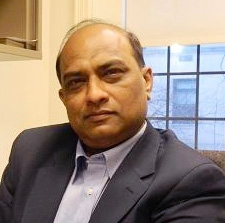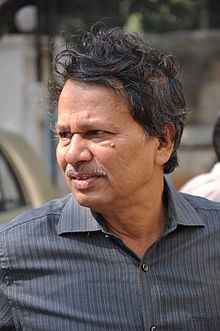Prof Vivek Kumar
 On January 20, 2021, Kamala Harris created a history of sorts by taking oath as America’s first female Vice President. She is the first woman of South Asian and Afro-American descent who has received such an honor. This may be a historic moment for Americans. However, if we analyze this history a little more deeply we will find that it is not so historic a moment in American democracy as it is being made out to be.
On January 20, 2021, Kamala Harris created a history of sorts by taking oath as America’s first female Vice President. She is the first woman of South Asian and Afro-American descent who has received such an honor. This may be a historic moment for Americans. However, if we analyze this history a little more deeply we will find that it is not so historic a moment in American democracy as it is being made out to be.
The obvious reason is that the United States of America is the oldest democracy in the world. If we consider the beginning of democracy here since 1788, when the US Constitution was approved by the states, then we will find that in the 233 year old history of democracy, America has not yet elected a single woman to the highest office of the nation.
We cannot treat this American success as great, because this success of America has come 60 years late as compared to South Asia. It is to be remembered here that a woman was sworn in as head of state in 1960 in Sri Lanka (known as Ceylon at that time), which was just a small emerging democracy in South Asia.
Even if you take India as compared to America, then here too in 1966, that is, about half a century ago, a woman was sworn in as the leader of the elected government of the nation. Not only this, a woman was sworn in as head of the country in 1988 and 1991 in Pakistan and Bangladesh respectively in South Asia, almost thirty years earlier than America’s election of a woman to the second highest office of the country. But even today, no woman has been sworn in as the head of the country (President) in democratic America.
Hence on this basis, we can easily argue that the oldest democracy in the world is at least half a century behind the democratic countries of South Asia.
For factual and precise information on July 21, 1960, Sirimavo Bandaranaike, became the world’s first female head of nation from South Asia. In all, in different stints, she ruled her country for 17 years and created history. After Sri Lanka, Indira Gandhi of India became the female head of the nation via an elected government in January 1966. She also ruled the country for nearly 15 years on various occasions, before her assassination on 31 October 1984. Throughout the period when Indira Gandhi was at the helm of affairs she not only had complete control over her political party but she also had complete control over the country’s politics. Can we say the same for Kamala Harris in US?
In South Asia, in Pakistan also, Benazir Bhutto became the head of State on 2 December 1988. In fact, she became the first female head of any State among the Muslim majority nations of the world. She also became the Prime Minister of Pakistan for the second time during 1993–1996. On the other hand, in the Muslim world itself, Khaleda Zia was sworn in as the first female Prime Minister of Bangladesh on 20 March 1991 and another woman politician, Sheikh Hasina, became the second woman to be sworn in as Prime Minister of Bangladesh on 23 June 1996. In fact Sheikh Hasina is currently the longest-serving Prime Minister of Bangladesh.
The legacy of the women heads of state in South Asia was carried forward by Chandrika Kumaratunga, the daughter of Sirimavo Bandaranaike, the first woman head of the State in the world. She went on to become the first female President of Sri Lanka in November 1995, but left politics after the assassination attempt on her in 1999 by LTTE.
Here, it would be expedient to mention the names of directly/indirectly elected formal heads of South Asian countries such as India and Nepal. For example, Pratibha Devisingh Patil was sworn in as the first woman President of India in July 2007, while Bidhya Devi Bhandari as the first female President of Nepal in October 2015. Has this been possible in America so far? So we can observe ourselves, the number of woman heads in South Asia has been growing.
Will Black, Latino, Native American, and Muslim women in America or Dalit, Tribal, Pasmanda women in South Asia reach the highest office of their Nations?
Although, women are being elected to the top most posts, in the US and South Asian countries, yet the women of both the regions face challenges. From the point of view of social movements and social change, it is pertinent to record the challenges as well.
America has to succeed in electing its first woman to the highest post of the nation, and a self-sufficient/independent woman in South Asia has to succeed in the election to the highest post of the country. Self-sufficient/independent here means a woman without any political patronage and not belonging to any political dynasty.
We are aware that in South Asia, women who have been elected to the highest posts in their nations have carried forward the political legacy of their father or husband. For example, in 1959 Sirimavo Bandaranaike, captured the then highest office of nation riding at the back of sympathy wave after her husband, S. W. R. D. Bandarnaike’s murder. In the same vein, Khaleda Zia could capture the reigns of Bangladesh National Party, and thereby the highest office of the land because of the sympathy wave created by her husband’s assassination in 1981. Indira Gandhi, Benazir Bhutto, Sheikh Hasina too have all carried forward the legacy of their fathers, Jawaharlal Nehru, Zulfiqar Ali Bhutto and Sheikh Mujibur Rahman respectively. In Sri Lanka, Chandrika Kumaratunga got the legacy of both her mother and father.
From the point of view of contemporary politics, social change and social movements, if we assess the election of women to the highest offices in America and South Asia, then we can get a few more points for consideration. In the context of America, an Afro-American woman who is a product of the black movement–like Black Panthers– has yet to establish herself in the mainstream politics of America. Kamala Harris does not represent that identity.
It is well known that throughout the US Presidential elections 2020, Kamala Harris’s mother’s South Asian (Indian) and her father’s Jamaican or Afro-American identities were exploited to attract Indians and Afro-Americans to the Democratic Party.
However, on the basis of sociology of identity it would be difficult to believe that Indians living in America would not have associated themselves with Kamala Harris’s mother’s Tamil Brahmin identity. Therefore, although Kamala Harris may be seen representing women in American politics, but in reality she does not represent excluded, black, Latino, Red Indian and poor, etc., women of United States of America.
Similarly, women born in Sri Lanka, India, Pakistan, Bangladesh, Nepal etc., who were/are elected to the highest offices of the land, also belong to so-called higher castes and definitely to higher class, with support of the status quoist forces. They too do not come from Dalit, Adivasi, and within minorities, the Pasmanda society.
In South Asia, we have to analyze whether these women leaders represented or are giving representation to other women as the heads of their political parties – like Indira Gandhi, Shrimao Bhandarnayake, Benazir Bhutto, Sheikh Hasina, Chandrika Kumaratunga etc.. If not then, how can we celebrate them?
Will the world’s oldest and world’s largest democracies, by electing excluded women to the highest office in their respective country’s politics, set an example for many other countries of the world, especially for the countries of South Asia, and strengthen the democracies throughout the world? We will wait for this happy moment in this decade of the 21st century.
~~~
Prof Vivek Kumar is Prof of Sociology at the Centre for the Study of Social Systems/ Jawaharlal Nehru University, and Public Intellectual. Views expressed are personal.










